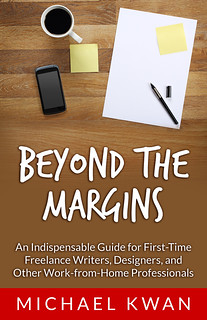It’s undeniable that there is a lot more to great writing than simply having perfect spelling and grammar. That being said, as you may have been able to surmise from the Grammar 101 series, proper grammar is still very important. This is especially true in a professional context.
And while there is no true replacement for having a highly skilled human editor go over your work, automated tools like Grammarly can pick up on mistakes that you may otherwise miss. Indeed, I find that editing my own work is the greatest challenge of all.
Most web browsers and word processors have built-in spell checking utilities, but these tools are inherently limited. If you mistake “there” for “their,” it likely won’t mark that as a mistake. With Grammarly, you get an online interface where you can either type up your document directly or copy and paste the text into the editor. From there, the Grammarly tool will automatically highlight errors and issues as you go along. It’s not quite in real-time, as grammar must account for context, but I found that it would show the areas of concern after every few sentences or so.
The browser-based interface is the most straightforward. Premium members can optionally download the Microsoft Office add-on to check for grammar issues in your Word documents. Grammarly also offers a Chrome extension so that it can check your spelling and grammar while you surf the web, draft e-mails and post updates on Facebook.

To test how well the Grammarly tool worked, I put it through a couple of tests. First, I copied the recent post I wrote about being a WAHD into the editor. It picked up on a few stylistic choices, like the unnecessary use of the word “really” for emphasis. Naturally, it wasn’t as good at ignoring HTML tags, like the ad code. Any potential issues are highlighted in green or red with an associated card explaining what should be changed.
In an effort to push Grammarly a little further, I drafted up a mock document with a series of intentional errors. Sadly, Grammarly missed several of these mistakes.
“i is typing words into dis editer.”
Even though there are clearly several issues here, Grammarly only picked up on two of them: it wanted to change “is” to “was” and it wanted to change “editer” to “editor.” It did not tell me to capitalize “I” and it did not want to correct “is” to “am.” It also thought that “dis” was just fine.
These are glaring errors that are far more important than having an unclear antecedent or using a redundant word like “really.” Of course, the hope is that your writing isn’t that bad before putting it through a grammar checker.

Grammarly is remarkably robust for what it does. You can define the type of document you’re checking, and the tool boasts individual toggle switches for whether you want the tool to check for contextual spelling, grammar, punctuation, sentence structure, and style.
A premium account, which starts at $139.95/year, provides access to a plagiarism checker and a vocabulary enhancement tool to “diversify your writing.” If you don’t want these extra features (like the Microsoft Office add-on), you can always use Grammarly for free.
While it may not be perfect, Grammarly isn’t a bad way to double-check your blog posts, e-mails and other documents before sending them off into the online world.





I don’t know why you’re worried – dis be fabulous brah!
Where da rum, mon?